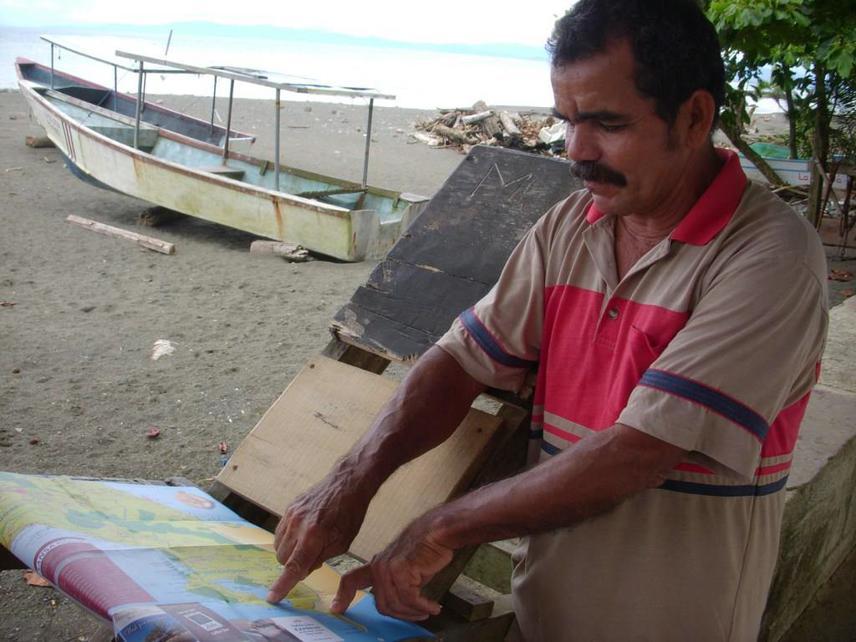Articles featuring the project.
Costa Rican Conservation Network Blog:
LISTENING TO THE COMMUNITY’S NEEDS
WORKING TOGETHER–IMPROVING THE OCEANS
ARCAE’S CHILDRENS’ ENVIRONMENTAL EDUCATION WORKSHOP: PUNTA BANCO
19 May 2011 Golfo Dulce, Costa Rica, Central and Latin America Marine | Turtles
The project aims to visually survey an approved tuna aquaculture site and record the presence of endangered green and critically endangered hawksbill sea turtles therein.
The Golfo Dulce is a fjord-like estuary located along Costa Rica’s Southern Pacific coast. Due to its unique morphology, the estuary’s 15 km wide mouth supports an array of endangered marine life. Currently unprotected the area faces increasing pressures from foreign development interests.

William Mata, project boat captain, with site map.
In 2008, a tuna aquaculture project, or tuna farm, was given governmental permission to establish its operations near the mouth of the Golfo Dulce. An industrial aquaculture project in the area would conflict with Costa Rica’s commitment to protecting turtle populations, and has the local eco-tourism and artisanal fishing sectors concerned over its possible effects on the economy. Determining the presence of turtles in this area will better define the possible environmental impact that the project might have on the area.
Team members will contribute to the responsible management of the area’s marine resources by performing and divulging the results of a visual survey of green and hawksbill sea turtle populations within the approved tuna farm site, by participating in local initiatives to establish a marine reserve in the area, and through a children’s environmental education program.
Twice a month a Pavones boat captain (team member) will take researchers to the site in a local fishing vessel (October 2011-April 2012) to visually survey the area. Because sea turtles are pelagic animals, their spatial distributions, population sizes, structures, and stock compositions are relatively unknown along Costa Rica’s Pacific coast. For this reason, team members, using the results of the visual survey, will calculate turtle density (expressed in number of turtles), the spatial distribution of the stock within the area of study, and the composition of the turtle population.
Community members, including fisher folk and ecotourism business owners, are concerned about the approved tuna farm’s environmental threats and are pursuing an initiative to establish a marine reserve in the area. For this very reason, project members will meet with local community leaders to identify stakeholder groups including local organizations, NGO’s, businesses, indigenous groups, government entities, etc. with an interest in the project’s results (September 2011-June 2012).
At the conclusion of the field work, the project’s results will be presented at a community workshop in Pavones. Team members will also use the visual survey data to construct environmental education programs to be presented to children and adolescents in the area’s schools (April-June 2012).
Articles featuring the project.
Costa Rican Conservation Network Blog:
LISTENING TO THE COMMUNITY’S NEEDS
WORKING TOGETHER–IMPROVING THE OCEANS
ARCAE’S CHILDRENS’ ENVIRONMENTAL EDUCATION WORKSHOP: PUNTA BANCO